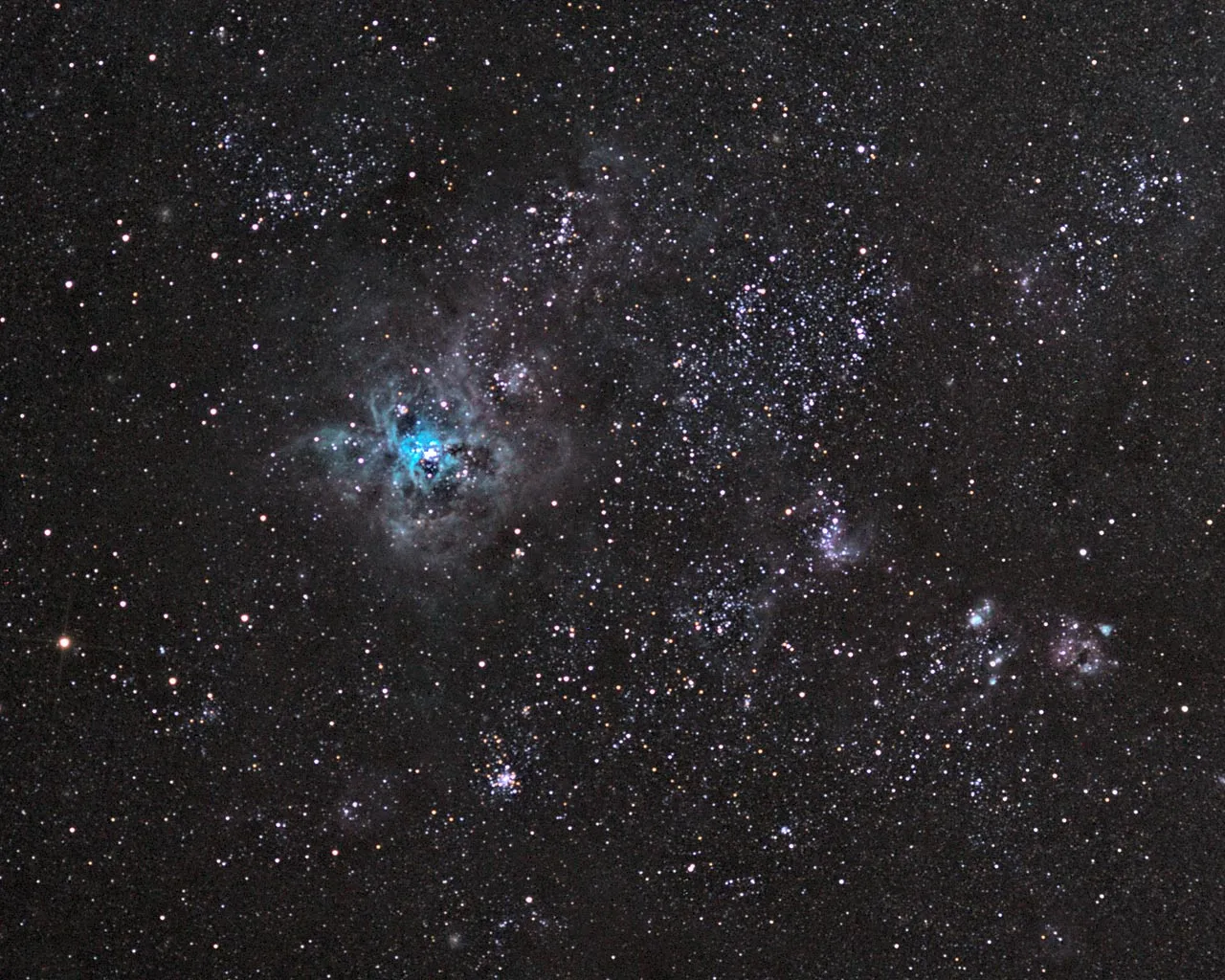What is the Tarantula Nebula?
The Tarantula Nebula, a colossal cosmic cloud, is a vibrant star-forming region located in the Large Magellanic Cloud (LMC), a dwarf galaxy that orbits our own Milky Way. This stunning nebula, also known as 30 Doradus, is one of the largest and most active star-forming regions in the Local Group of galaxies. Its intricate structure and brilliant colors make it a favorite subject for astronomers and astrophotographers alike. The Tarantula Nebula is not just a beautiful sight; it’s a laboratory for studying the birth and evolution of stars.
Location and Distance
The Tarantula Nebula resides in the Large Magellanic Cloud (LMC), a satellite galaxy of the Milky Way. This is not in the Milky Way itself. The LMC is approximately 160,000 light-years away from Earth. This immense distance means that the light we see from the nebula has been traveling for 160,000 years before reaching our eyes. Its position in the LMC makes it a fascinating object for studying star formation in a galactic environment slightly different from our own.
A Galaxy Far, Far Away
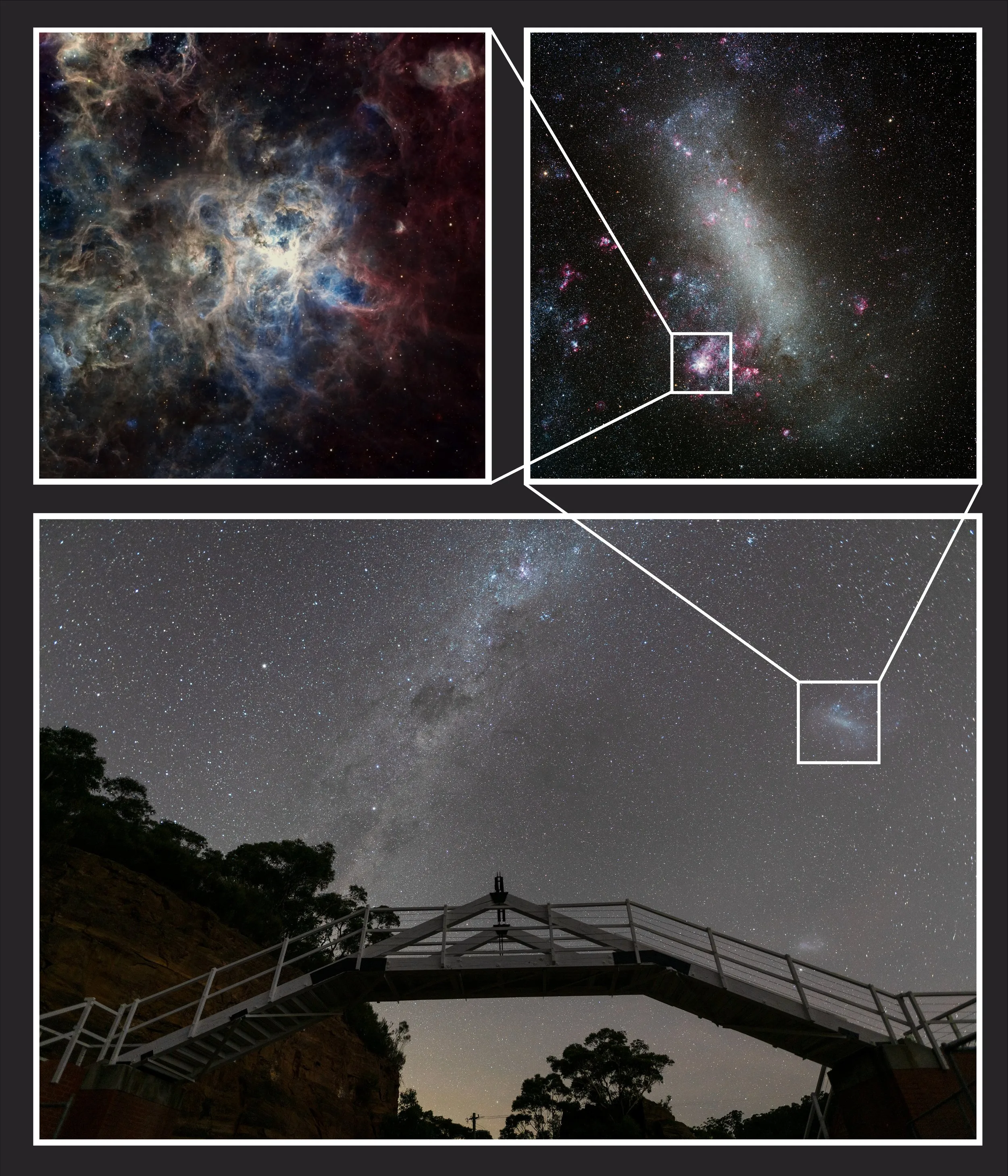
As the Tarantula Nebula is located within the Large Magellanic Cloud, it is in another galaxy. The LMC is gravitationally bound to our Milky Way Galaxy, but it is a separate entity, showcasing a different galactic structure and evolutionary path. Understanding the Tarantula Nebula provides insights into the processes occurring in other galaxies, offering a wider perspective on star formation and galactic dynamics. Its presence within the LMC gives astronomers a unique opportunity to study a star-forming region outside of our immediate cosmic neighborhood.
Size and Scale
The Tarantula Nebula is enormous, spanning nearly 1,000 light-years in diameter. To put this into perspective, if it were placed at the same distance as the Orion Nebula (a prominent nebula in our galaxy), it would appear much larger in the night sky. This vast size allows it to host a multitude of massive stars, nebulae, and stellar clusters. The scale of the Tarantula Nebula makes it an ideal region for studying the effects of intense radiation, stellar winds, and supernova explosions on star formation and the surrounding interstellar medium. The nebula’s sheer size and luminosity highlight its significance in understanding the life cycle of stars.
The Tarantula Nebula’s Place in the Cosmos
The Tarantula Nebula is a dynamic region where the birth of new stars is actively underway. The energetic processes within the nebula, including intense radiation from young, massive stars and supernova explosions, sculpt the environment and influence the formation of new stellar generations. These processes affect the interstellar medium, the gas and dust from which stars are born, creating a complex feedback loop. The study of the Tarantula Nebula helps scientists understand how stars form in different environments, from small, isolated regions to massive galaxies.
Formation and Structure
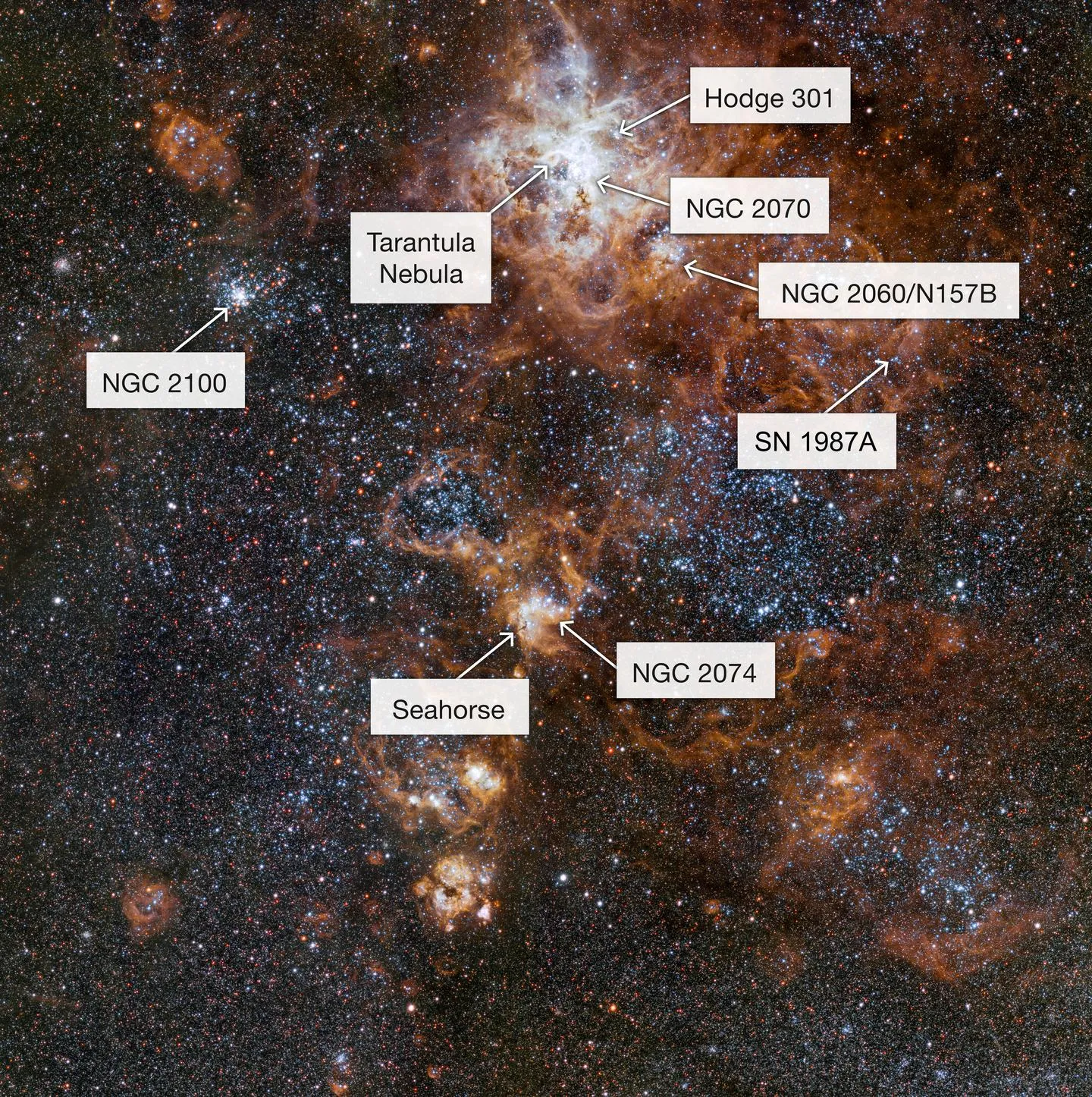
The intricate structure of the Tarantula Nebula is a result of the complex interplay between star formation, stellar winds, and the surrounding interstellar medium. As massive stars are born within the nebula, they emit intense radiation and powerful stellar winds. These energetic outflows shape the nebula’s morphology, creating bubbles, filaments, and cavities within the gas and dust. The structure of the Tarantula Nebula provides clues about the processes that regulate star formation in extreme environments. The different colors seen in images represent different elements and their ionization states, further revealing the dynamics at play.
Stars in Formation
The Tarantula Nebula is a hotbed of star formation, containing thousands of young stars. Many of these stars are incredibly massive, far larger than our Sun. Within the nebula, massive stars ionize the surrounding gas, causing it to glow brightly. The radiation from these massive stars also carves out cavities within the nebula, revealing the sites of new star formation. The Tarantula Nebula’s active star formation makes it a vital location for studying the early stages of stellar evolution and the formation of stellar clusters. The nebula is a stellar nursery where stars are born from the collapsing clouds of gas and dust.
Composition and Elements
The Tarantula Nebula’s composition consists primarily of hydrogen and helium, with traces of heavier elements. The presence of these heavier elements helps determine the nebula’s physical properties and its role in the cosmic cycle of star formation. The nebula’s color is a result of the emission of light by these elements when they are ionized by the intense radiation from massive stars. Studying the composition and distribution of elements in the Tarantula Nebula offers valuable insights into the chemical evolution of galaxies and the processes that shape the interstellar medium.
Top 5 Facts About the Tarantula Nebula
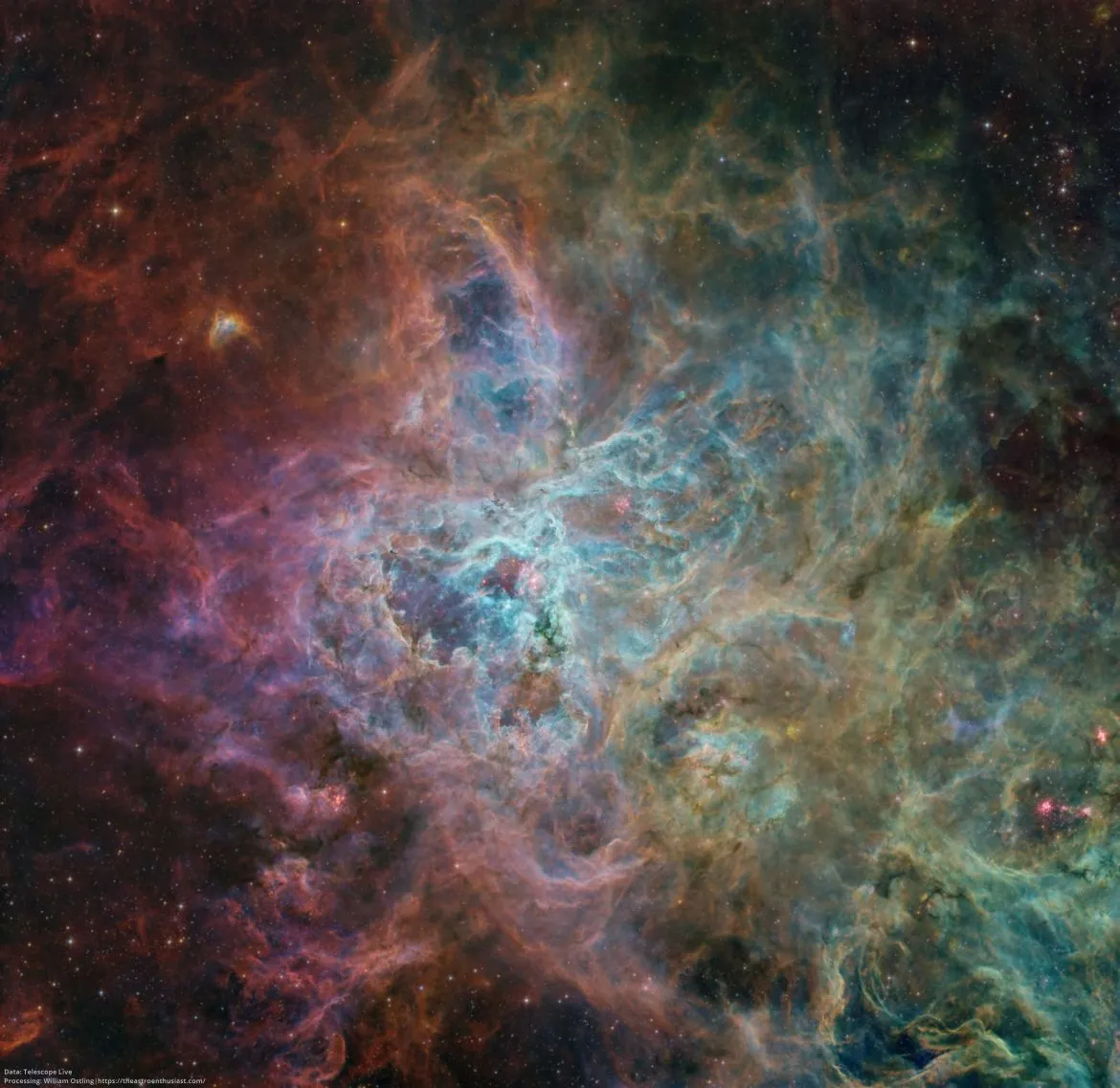
Fact 1 The Most Active Star-Forming Region
The Tarantula Nebula is the most active star-forming region in the Local Group of galaxies. This means it is producing new stars at a rate far exceeding other nearby nebulae. The high star-formation rate is fueled by the abundance of gas and dust within the LMC, as well as the presence of massive stars. This makes it an ideal laboratory for studying how stars are born and how the process varies in different environments.
Fact 2 Home to the Most Massive Stars
The Tarantula Nebula contains some of the most massive stars known to astronomers. These stars, which can be over 100 times the mass of our Sun, have a significant impact on their surroundings. Their intense radiation and powerful stellar winds sculpt the nebula and influence the formation of new stars. Studying these massive stars helps scientists understand the upper limits of stellar mass and the life cycles of the most extreme objects in the universe.
Fact 3 A Supernova’s Legacy
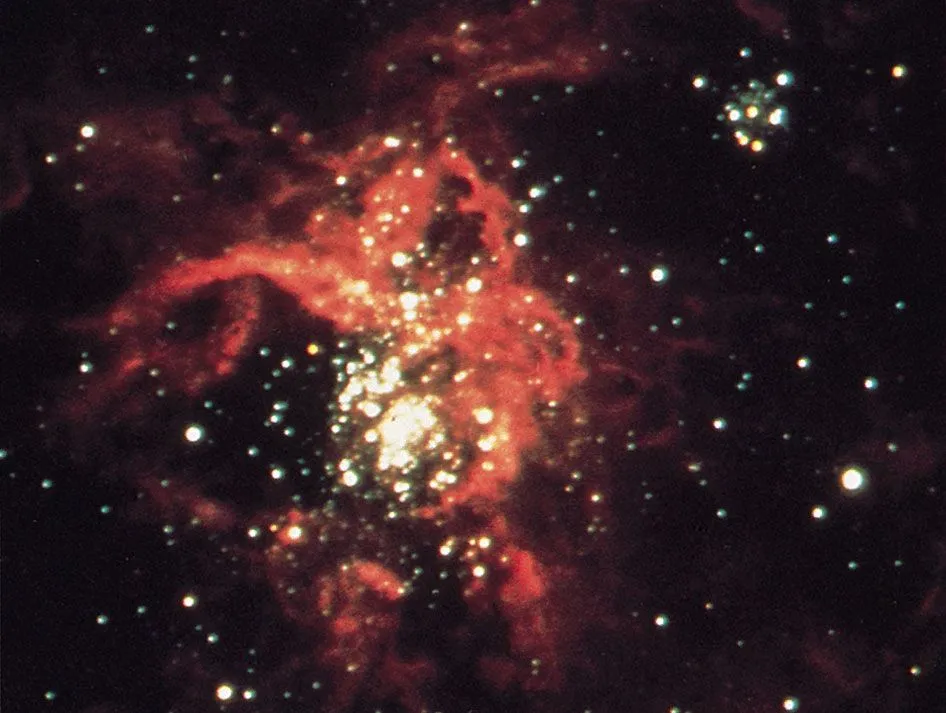
The Tarantula Nebula is the site of a recent supernova, SN 1987A, which occurred in 1987. This event provided astronomers with a rare opportunity to study a supernova up close, and the remnants of this explosion are still being observed. The study of SN 1987A helps scientists understand the processes that occur during a supernova explosion and how these events affect the surrounding interstellar medium. The supernova has left behind a complex structure of expanding gas and dust that continues to evolve.
Fact 4 Visible to the Naked Eye?
While the Tarantula Nebula itself is not visible to the naked eye, it can be viewed with binoculars or a small telescope under very dark skies. Because of its distance and relatively faint light, it is often easier to see in photographs. The Large Magellanic Cloud, in which the nebula is located, is easily visible from the Southern Hemisphere. Observing the Tarantula Nebula with telescopes reveals its complex structure and allows amateur astronomers to appreciate its beauty.
Fact 5 Studied by the Hubble and James Webb Telescopes
The Tarantula Nebula is one of the most studied objects in the universe, and it has been observed extensively by both the Hubble Space Telescope and the James Webb Space Telescope. These powerful telescopes provide high-resolution images and data, revealing the intricate details of the nebula’s structure, composition, and star formation processes. The data obtained by these telescopes is helping astronomers to gain deeper understanding of the nebula and the universe. These observations are crucial for advancing our knowledge of the cosmos.
Observing the Tarantula Nebula
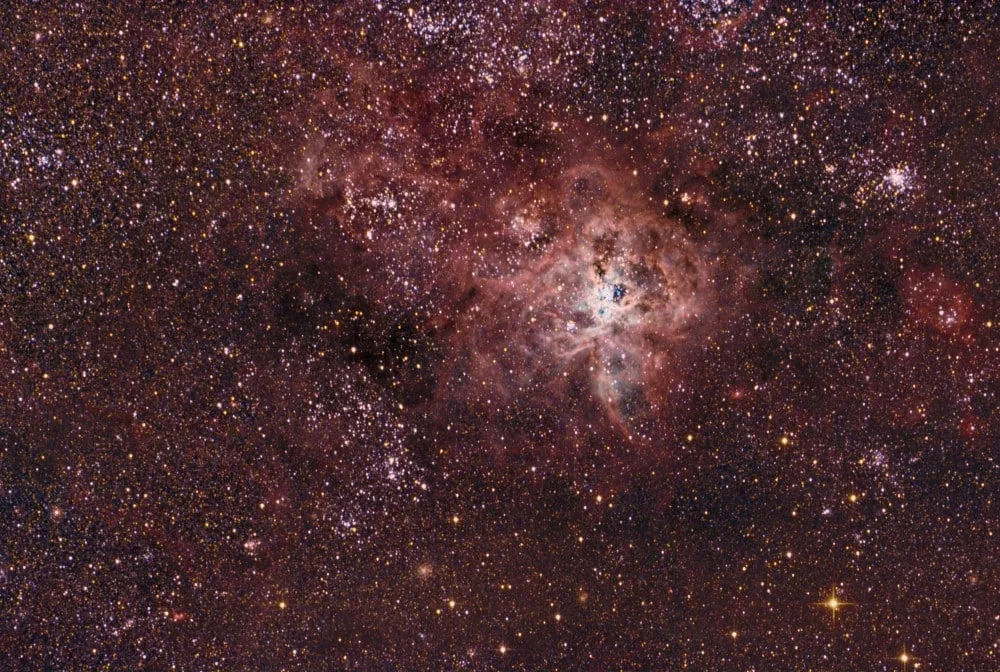
Observing the Tarantula Nebula can be a rewarding experience for amateur astronomers. The nebula’s location in the Large Magellanic Cloud means it is best viewed from the Southern Hemisphere, where it appears high in the sky. With the right equipment and planning, you can witness this spectacular cosmic wonder.
Best Times to Observe
The Tarantula Nebula is visible year-round from the Southern Hemisphere, but the best viewing times are during the winter months when the LMC is high in the sky. Dark, clear skies are crucial for optimal viewing conditions. Light pollution can significantly reduce the visibility of the nebula, so it’s best to observe from a location far away from city lights.
Equipment Needed
Binoculars can reveal the nebula as a fuzzy patch, but a telescope is needed to see its structure and details. A small telescope with a wide field of view is ideal for observing the entire nebula. A dark sky and a stable tripod are also essential for optimal viewing. Astrophotography can capture the nebula’s colors and details. Use a good camera and a tracking mount to photograph it. Filters can help enhance certain wavelengths of light, making the nebula’s features more visible.
Where to Look
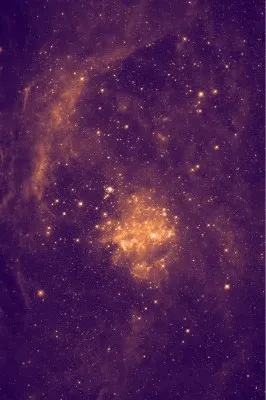
The Tarantula Nebula is located within the Large Magellanic Cloud (LMC). You can locate the LMC by finding the constellation Dorado. Once you have located the LMC, the Tarantula Nebula (30 Doradus) will be visible as a bright patch within the galaxy. Use a star chart or a planetarium app to help you find the LMC and the nebula. Ensure that you are in a location with minimal light pollution to maximize your viewing experience. Patience and careful observation are key to finding and enjoying this amazing object.
The Future of Research on the Tarantula Nebula
The Tarantula Nebula will continue to be a prime target for astronomical research. Ongoing studies using the James Webb Space Telescope and other advanced instruments promise to provide even greater insights into the nebula’s formation processes, stellar evolution, and the overall dynamics of star formation in extreme environments. New technologies, such as adaptive optics, will further improve our ability to observe the nebula with greater detail, allowing scientists to unravel its mysteries. Future research will also investigate the chemical composition of the nebula and the role of magnetic fields in star formation. By studying the Tarantula Nebula, we are expanding our understanding of the universe and the processes that shape it.
